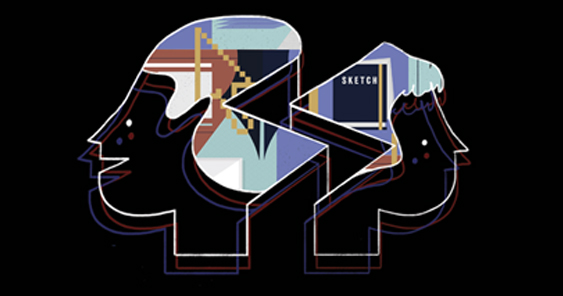Words and Art by Vnita Sohal
It always felt different: the smooth surface of paper as opposed to the cold, slight bulk of a mouse. Fine art and technology are two disciplines that open up a plethora of questions about what art really is and how it’s experienced. Digital medium became a reality at the turn of the 21st century, and since that moment, more and more has been imposed on the digital side. But there is still life in the world of handcrafted art, and both media have unique characteristics and new techniques which make them relevant and valuable today.
Traditional art is physical—a one-of-a kind art you create with your senses. However, in this digital age, it’s been a challenge for the traditional medium to take its place; a challenge for traditional artists to not just produce, but to showcase their work. Luckily, artists who specialize in the art form of the free hand are finding ways to make their work remain relevant. Take installation art, for instance. These often occupy a space that the spectator has to walk through or around in order to engage fully with the work. Some however, are so fragile that they can only be viewed from a distance. What makes installation art different is that it’s not flat and two-dimensional. It is a complete unified experience, rather than a display of separate, individual artworks. This gives the spectator a chance to be part of the artwork of, for example, Yayoi Kusama and her famous polka dots, Damien Hirst and his preserved art. Artists now incorporate materials like light and wood, to give their work personality rather than just the old pen and paper. They all fuse traditional art with other forms using modern techniques for it be more appealing to their audience and at the same time, they can be distinguished from their style. Traditional art in this day delivers an immersive sensory experience not just for the spectator, but for the artist as well.
Digital art on the other hand, allows for the exact reproduction of reality. In the past, computers have only been used for tedious work and labor. Today we see art forms generated digitally—making it easier for artists to create their own masterpieces.
Adobe, a platform that introduced us to Creative Cloud, is helping designers even more as they introduce a bevy of new programs and updates released between 2017 to early 2018. These include the Elements Family 2018 and Adobe Sensei. Elements Family 2018 is a roster of software for photography and video: Photoshop Elements 2018 and Premiere Elements 2018—perfect for entry-level photographers, image and video editors and hobbyists. It contains most of the features of the professional version but with fewer and simpler options. One is specifically for photo, the latter for video. Adobe Sensei, a software that re-creates elements in photos where they didn’t exist, sees type and recreates fonts — all by studying nearby pixels. Within Adobe Document Cloud, it transforms paper into editable digital documents, automatically includes the right fonts, creates form fields and cleans up signatures. It eliminates all the tedious work, basically.
While rolling out these softwares, Adobe released updates for some of the mainly-used softwares like Photoshop and Illustrator. Over 1,000 digital brushes from award-winning illustrator Kyle T. Webster are now available exclusively in Photoshop, for free. The software has now better brush organization, performance improvements and stroke smoothing by enabling designers to reorder, create folders, and toggle new view modes. Designers and artists will now be able to select the prominent objects in images with just one click with the new Select Subject feature. UI Scaling is now possible as Photoshop scales for high-resolution monitors individually. And, the program can now be integrated with Microsoft Dial. Adobe also released an extraordinary tool for Illustrator users— the Puppet Warp. It lets you twist and distort parts of an artwork but to a limit that it appears natural. Adding pins to a point in the artwork let’s users add, move, and rotate seamlessly, and easily transform one artwork into different variations. To further the improvements, Illustrator now supports Variable Font, a new OpenType font format that supports custom attributes like weight, width, slant, optical size, etc. Using the slider controls, designers can now conveniently adjust their font. (All of Adobe’s updates and new releases can be found here.)
All of these are innovations in the craft of hand and mouse. No matter what tool is used, whether it is a real brush, a digital brush, a real pen or a digital pen—it all ends with an artist creating an exemplary piece of art.
This article was published in the adobo magazine Trends 2018 issue.










